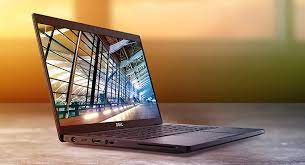Dell is now implementing some high-quality materials in its premium business devices. As the manufacturer says the laptop is “available” in machined aluminum, carbon fiber or magnesium alloy. Of course, this laptop is not for everybody – the premium looks and materials cost a premium price. However, if you are in need of a super reliable business device – this might just be the laptop for you.
It houses vPro ULV processors from the Kaby Lake Refresh line-up and sadly – no dedicated GPU. What is more important according to the manufacturer, though is that you are going to be extremely dope if you show up with the Latitude 13 7390 in your favorite cafe or the office, respectively.
Specs Sheet
Dell Latitude 13 7390 technical specifications table
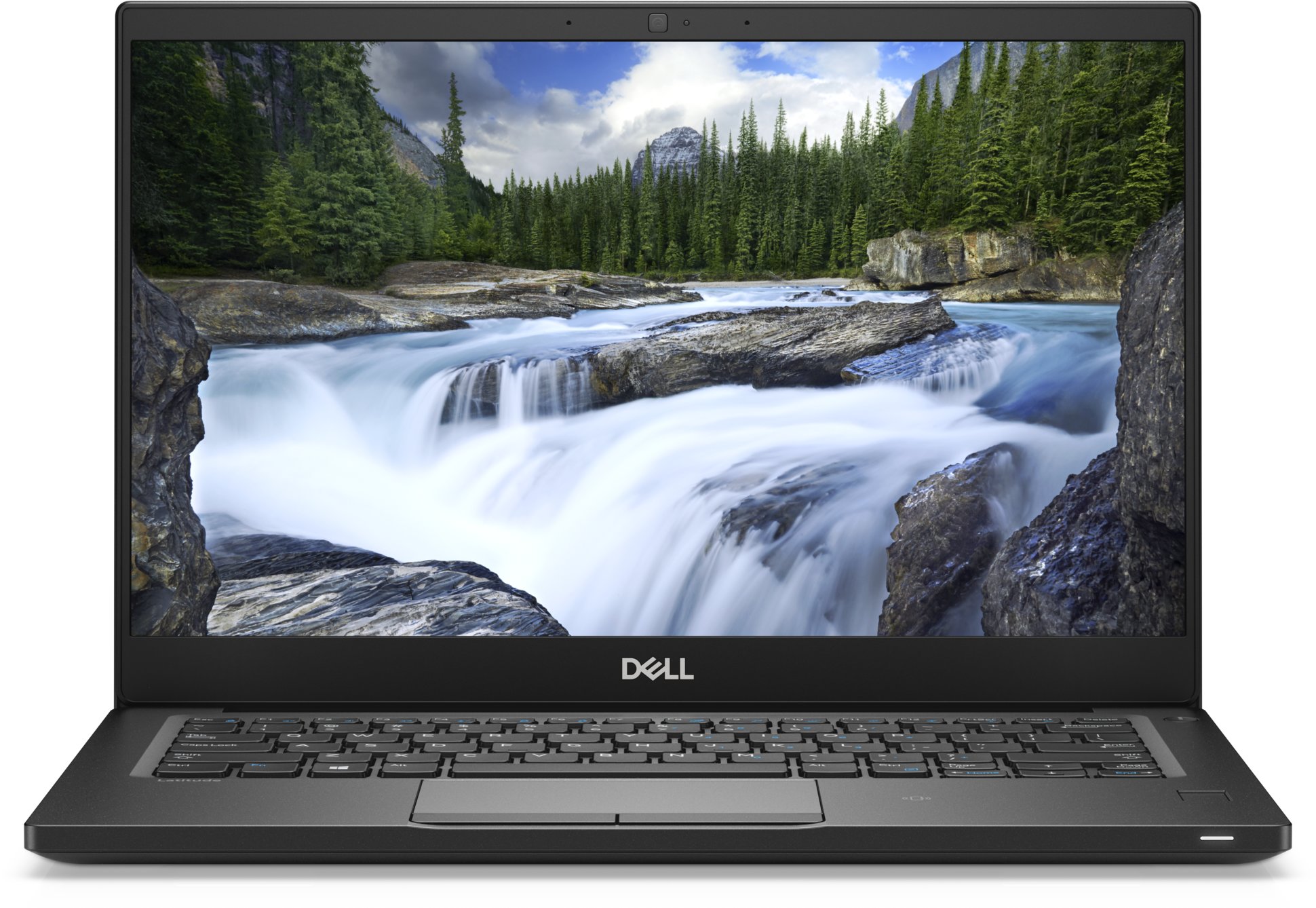
$679.77
from Amazon
CPU
GPU
Display
13.3”, Full HD (1920 x 1080), IPS
HDD/SSD
256GB M.2 SATA SSD
M.2 Slot
1x 2280 PCIe NVMe M.2 slot See photo
RAM
8GB DDR4, 2400 MHz
Dimensions
305 x 208 x 16 mm (12.01″ x 8.19″ x 0.63″)
Weight
1.17 kg (2.6 lbs)
Body material
Magnesium alloy
Ports and connectivity
- 1x USB Type-C DisplayPort
- 1x USB Type-A 3.2 Gen 1 (5 Gbps), Sleep and Charge
- 1x USB Type-A 3.2 Gen 1 (5 Gbps)
- HDMI 1.4
- Card reader microSD 4.0
- Ethernet lan
- Wi-Fi 802.11ac (2×2)
- Bluetooth
- Audio jack combo audio / microphone jack
Features
- Web camera HD 720p
- Microphone Dual-Array Microphone
- Speakers 2x 2W
- Security Lock slotNoble Wedge Lock slot
What’s in the box?
Latitude 13 7390 comes in a very suttle box, that, despite its unimpressive look, has a lot of foam inside to keep the precious hardware intact. Additionally, you’ll find some paper manuals and a 65W power brick. In fact, it seems that the Latitudes are now coming with the same adapter we saw on the more expensive XPS brand.
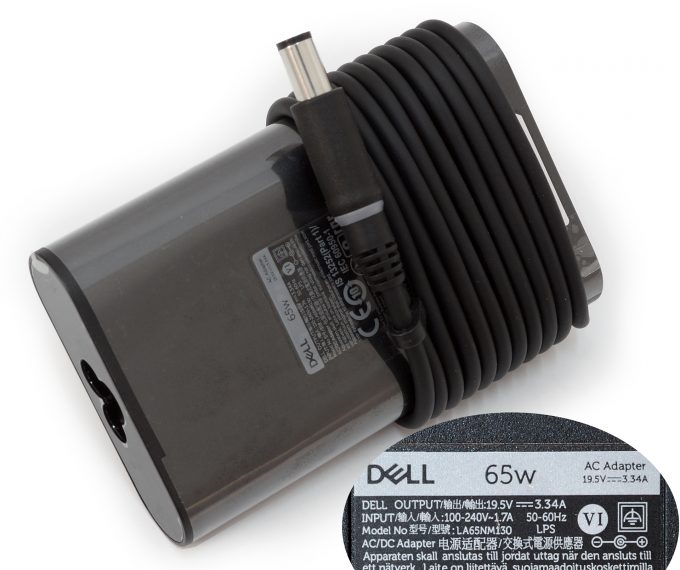
Design and construction
In a world of extremely light and portable 13-inchers manufacturers are faced upon a great challenge to provide you with the best possible in the aforesaid aspect, and at the same time keeping the laptop structurally strong. Especially when a laptop like the Latitude 13 7390 should be able to provide you with unprecedented performance for multiple years before you need an upgrade. In terms of measurements, the laptop weighs only 1.17 kg (2.6 lbs) and has a profile of 16 mm.

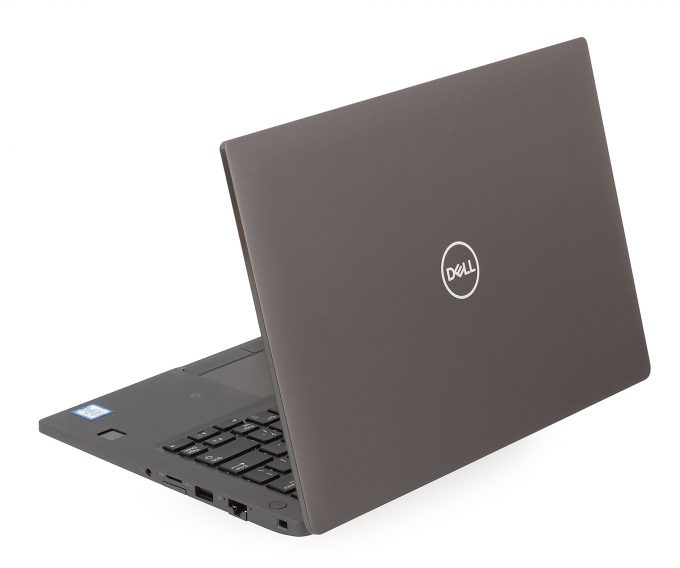
Feature-wise this laptop is loaded. After you open the lid you are going to see an IR face recognition system, that is extremely fast – in fact, it is faster even than the HP EliteBook 1050 G1, that was previously the fasted we tested. On the downside, however, the optical fingerprint reader that Dell has put on this device is both slow and too pretentious – you need your fingers to be extremely clean and it still doesn’t work 100% of the times.
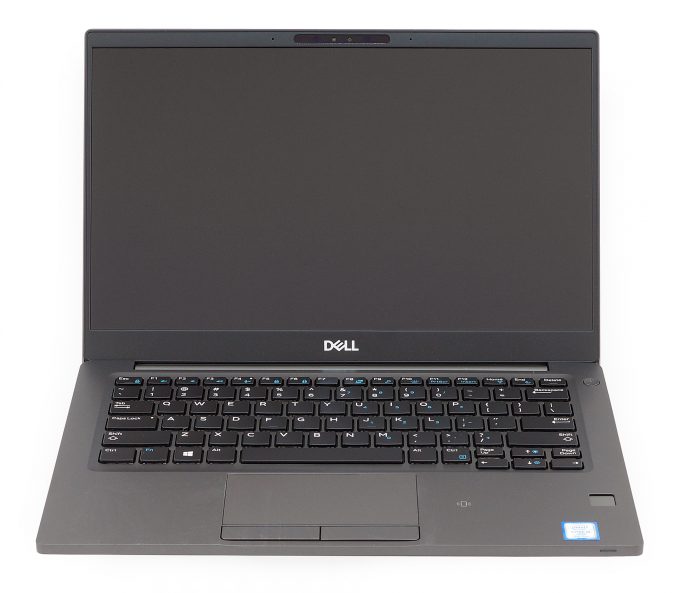
Further below is the base of the laptop, that houses a very pleasant to type keyboard – its key travel is relatively long and it has tactile feedback to it. What we think is going to ruin the experience in the long run, however, is the big gap between the key and the surface of the laptop, that is going to be susceptible to dust and not to mention an eventual spill.
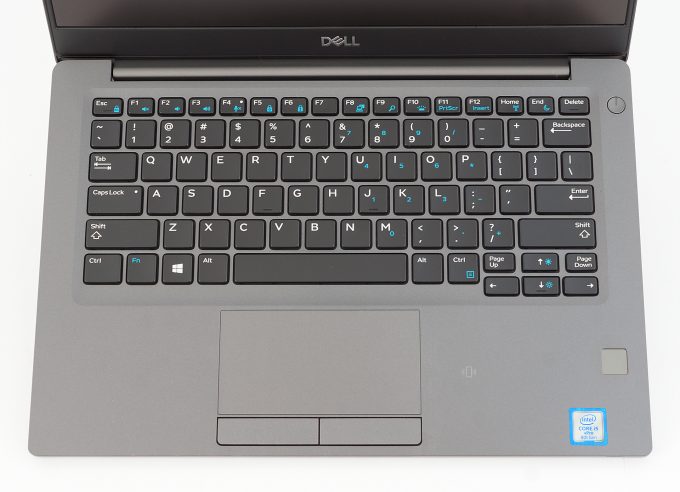
Just beneath the keyboard, you can see the touchpad which is very accurate and responsive. It also has dedicated left and right mouse button, which is always an advantage. By the way, if you were observant enough, you would notice the weird symbol just on the right of the touchpad. What it hides beneath it is an NFC antenna for fast connection to your smartphone or any smart device that comes with one.
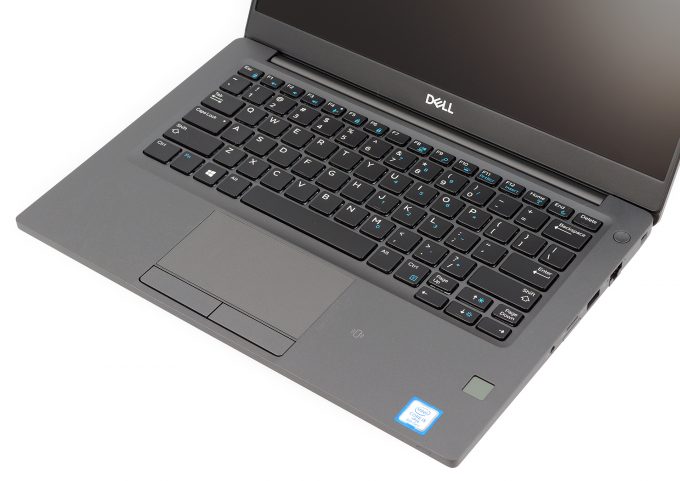
On the bottom, you can see the linear cut-out for the speakers, as well as the ventilation grills. Hot air comes out from in between the base and the lid of the device – nothing unexpected.
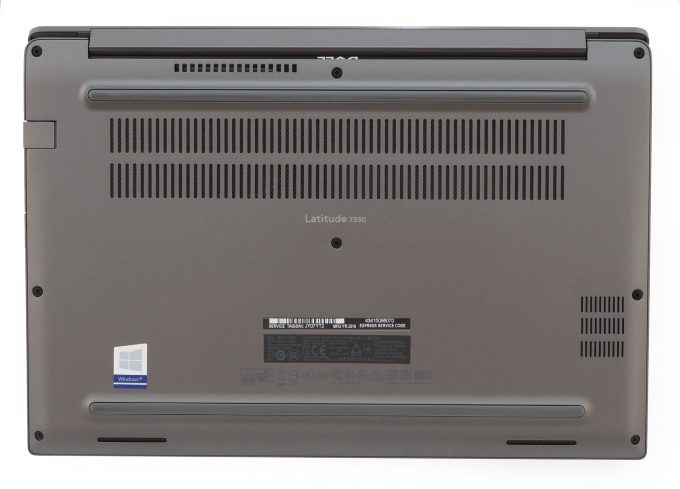
Ports
Starting from the left side, there is the rather big barrel-styled plug, followed by a Thunderbolt 3.0 port and an HDMI connector, USB Type-A 3.1 (Gen. 1) port with Powershare and a Smart card reader. On the other side, you can see an RJ-45 connector, another USB Type-A 3.1 (Gen. 1), a microSD card reader and the headphone jack. As you can see from the images below, there is another segment just beneath the microSD card reader, and that is reserved for the optional SIM card slot.


Display quality
Dell Latitude 13 7390 is equipped with a Full HD IPS panel, Innolux 133 HCE-0DDJ0 (CMN1382). Its diagonal is 13.3-inch (33.78 cm), and the resolution – 1920 х 1080p. Additionally, the screen ratio is 16:9, the pixel density – 166 ppi, their pitch – 0.153 х 0.153 mm. The screen can be considered Retina when viewed from at least 53 cm (from this distance, the average human eye can’t see the individual pixels).
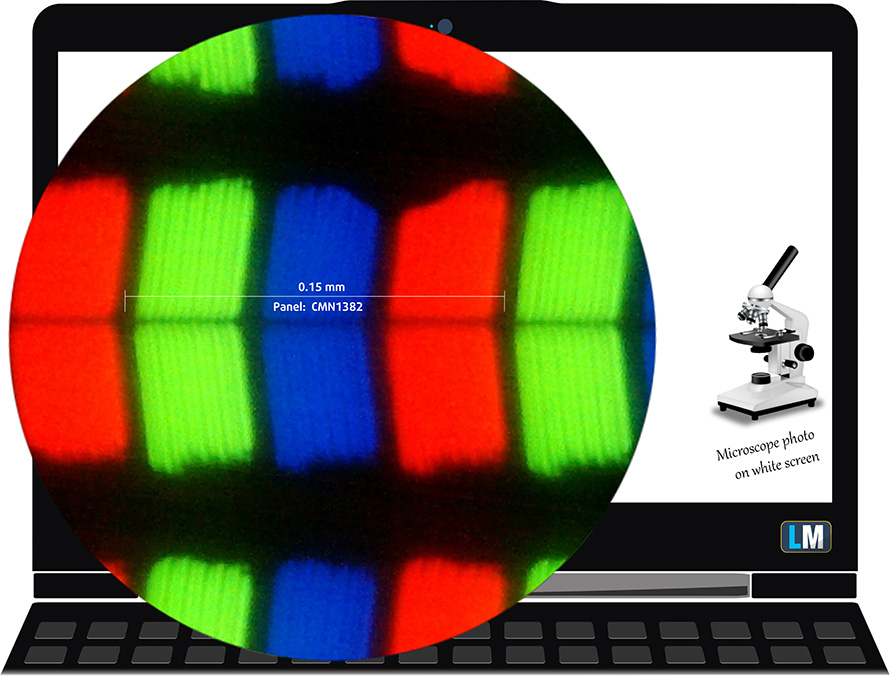
Viewing angles are comfortable. We offer images at different angles to evaluate the quality.
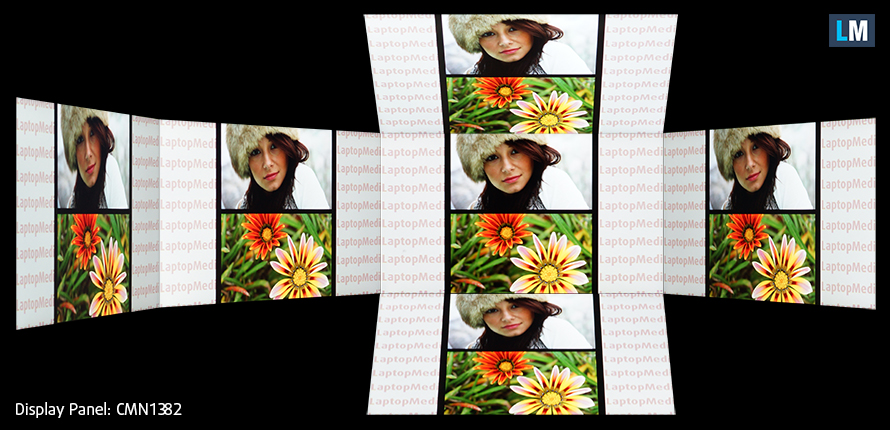
The maximum measured brightness is 307 nits (cd/m2) in the middle of the screen and 290 nits (cd/m2) average across the surface with a maximum deviation of 13%. The Correlated Color Temperature on a white screen and at maximum brightness is 7830K – colder than the 6500K temperature for sRGB. The average color temperature through the grey scale before profiling is 7700K.
In the illustration below you can see how the display performs from uniformity perspective. The illustration below shows how matters are for operational brightness levels (approximately 140 nits) – in this particular case at 44% Brightness (White level = 142 cd/m2, Black level = 0.1 cd/m2).
Values of dE2000 over 4.0 should not occur, and this parameter is one of the first you should check if you intend to use the laptop for color sensitive work (a maximum tolerance of 2.0 ). The contrast ratio is excellent – 1360:1 (1190:1 after profiling).
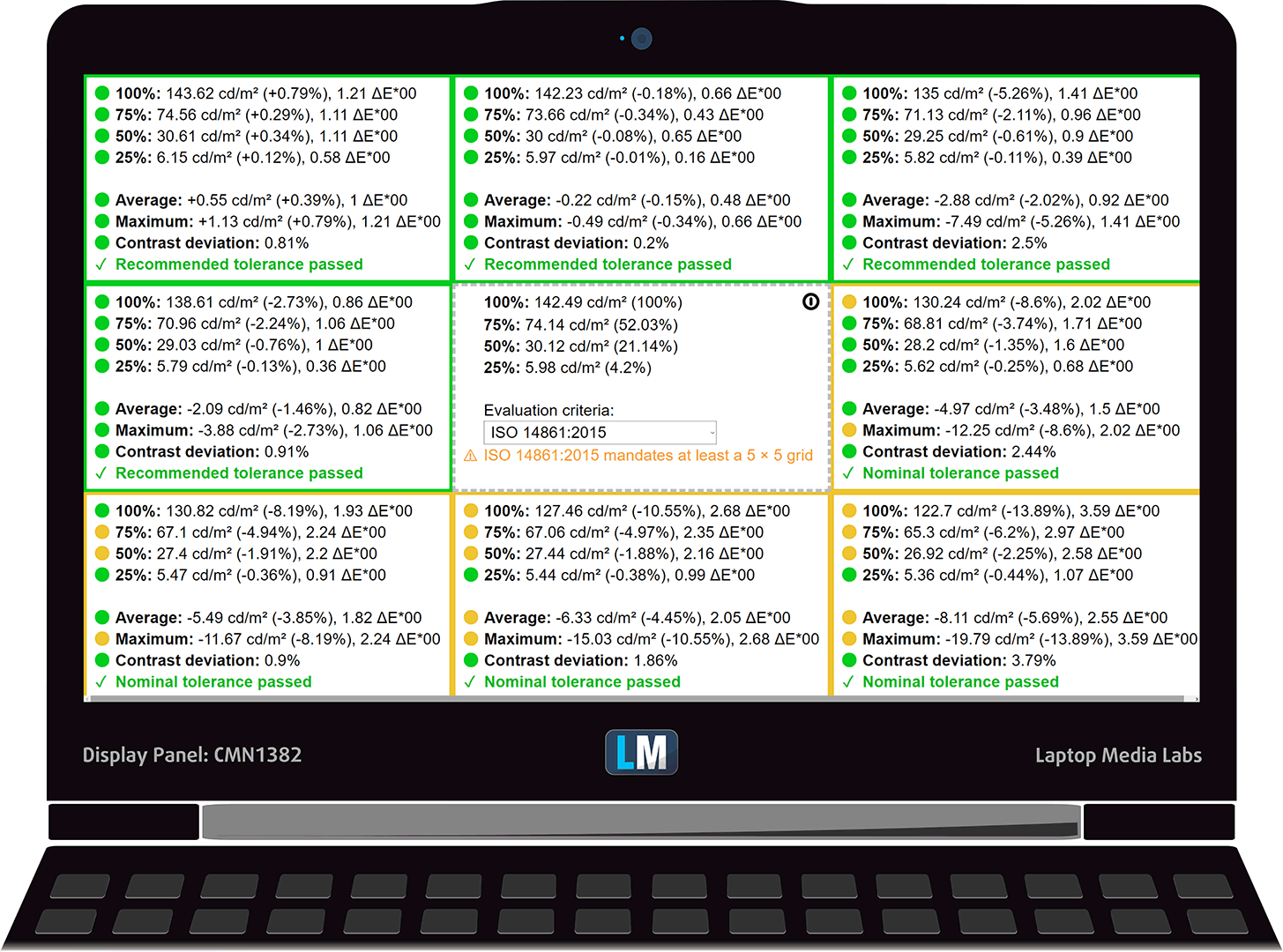
To make sure we are on the same page, we would like to give you a little introduction of the sRGB color gamut and the Adobe RGB. To start, there’s the CIE 1976 Uniform Chromaticity Diagram that represents the visible specter of colors by the human eye, giving you a better perception of the color gamut coverage and the color accuracy.
Inside the black triangle, you will see the standard color gamut (sRGB) that is being used by millions of people in HDTV and on the web. As for the Adobe RGB, this is used in professional cameras, monitors, etc for printing. Basically, colors inside the black triangle are used by everyone and this is the essential part of the color quality and color accuracy of a mainstream notebook.
Still, we’ve included other color spaces like the famous DCI-P3 standard used by movie studios, as well as the digital UHD Rec.2020 standard. Rec.2020, however, is still a thing of the future and it’s difficult for today’s displays to cover that well. We’ve also included the so-called Michael Pointer gamut, or Pointer’s gamut, which represents the colors that naturally occur around us every day.
The yellow dotted line shows Dell Latitude 13 7390’s color gamut coverage.
Its display covers 98% of the sRGB/ITU-R BT.709 (web/HDTV standard) in CIE1976, providing a punchy and vibrant image.
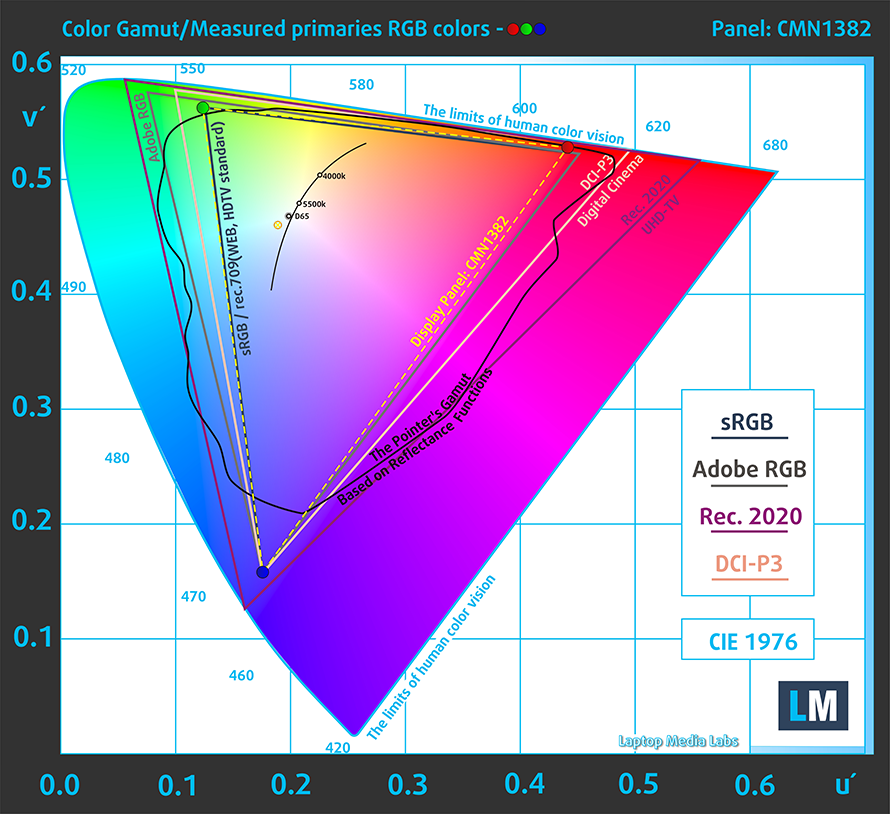
Our “Design and Gaming” profile delivers optimal color temperature (6500K) at 140 cd/m2 luminance and sRGB gamma mode.
We tested the accuracy of the display with 24 commonly used colors like light and dark human skin, blue sky, green grass, orange, etc. You can check out the results at factory condition and also, with the “Design and Gaming” profile.
Below you can compare the scores of Dell Latitude 13 7390 with the default settings (left), and with the “Gaming and Web design” profile (right).
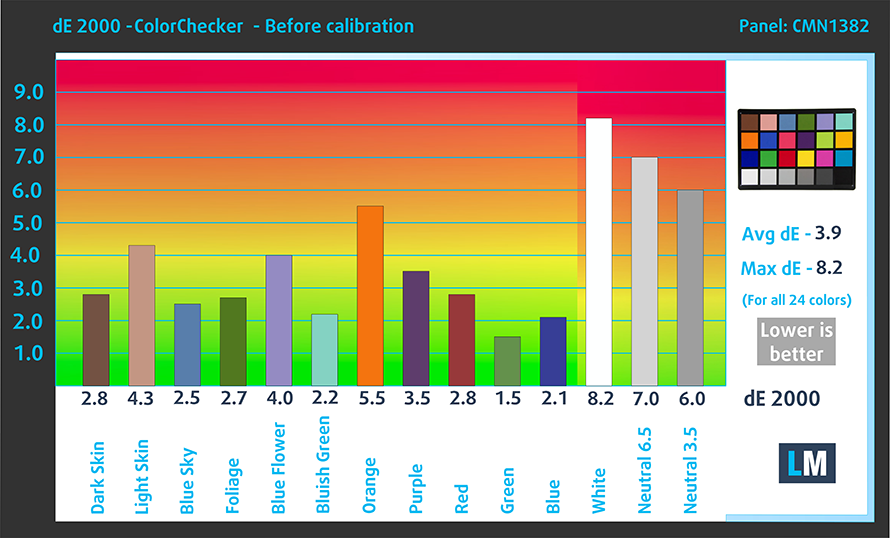

The next figure shows how well the display is able to reproduce really dark parts of an image, which is essential when watching movies or playing games in low ambient light.
The left side of the image represents the display with stock settings, while the right one is with the “Gaming and Web Design” profile activated. On the horizontal axis, you will find the grayscale and on the vertical axis – the luminance of the display. On the two graphs below you can easily check for yourself how your display handles the darkest nuances but keep in mind that this also depends on the settings of your current display, the calibration, the viewing angle, and the surrounding light conditions.
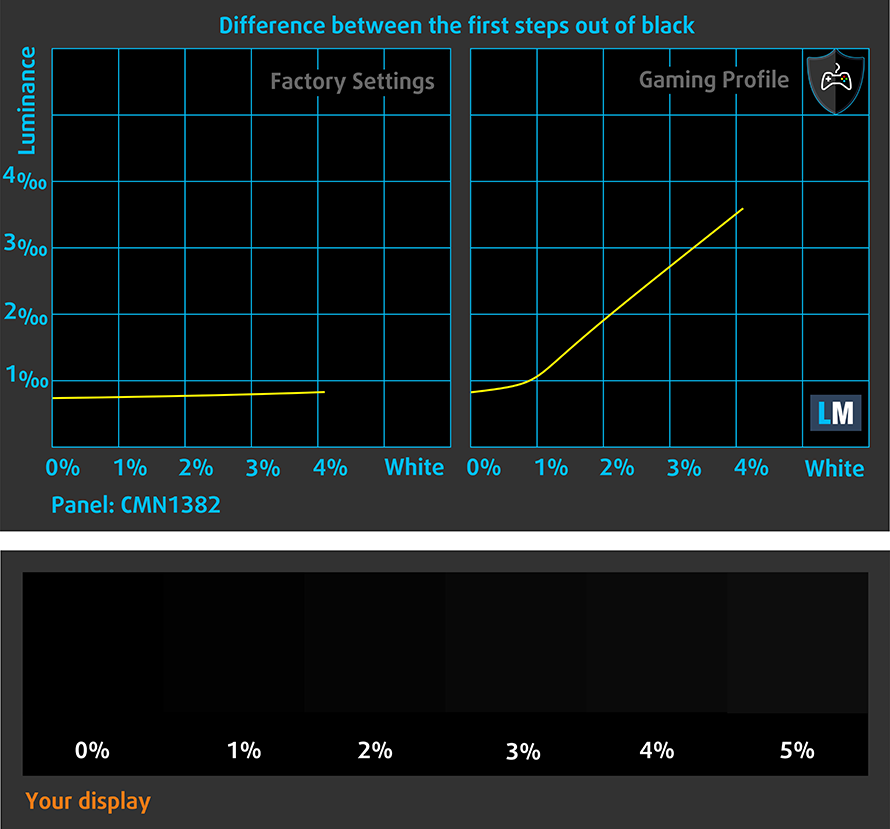
Response time (Gaming capabilities)
We test the reaction time of the pixels with the usual “black-to-white” and “white-to-black” method from 10% to 90% and vice versa.
We recorded Fall Time + Rise Time = 22 ms.
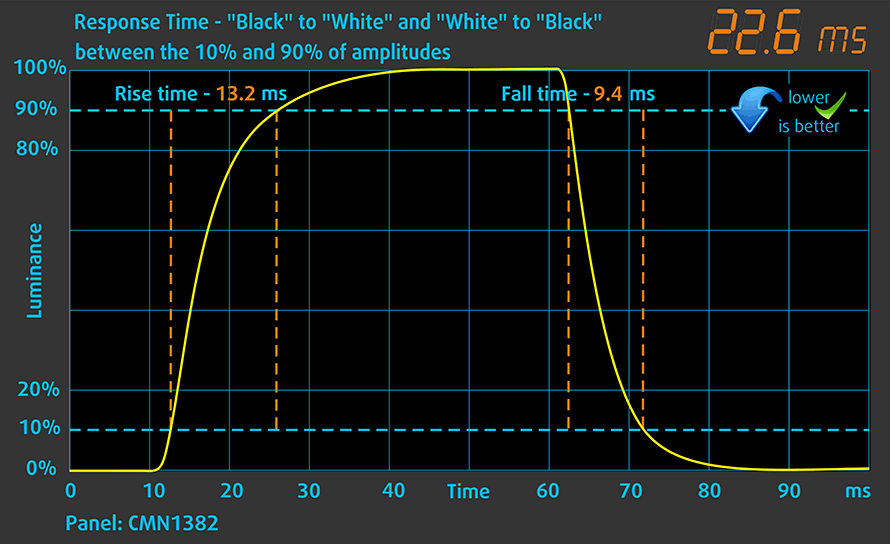
Health impact – PWM / Blue Light
PWM (Screen flickering)
Pulse-width modulation (PWM) is an easy way to control monitor brightness. When you lower the brightness, the light intensity of the backlight is not lowered, but instead turned off and on by the electronics with a frequency indistinguishable to the human eye. In these light impulses, the light/no-light time ratio varies, while brightness remains unchanged, which is harmful to your eyes. You can read more about that in our dedicated article on PWM.
Dell Latitude 13 7390’s display uses PWM to adjust its brightness up until 80 nits. However, thankfully, the flickers are with a very high frequency, which makes it less obtrusive for your eyes, during extended periods of use.
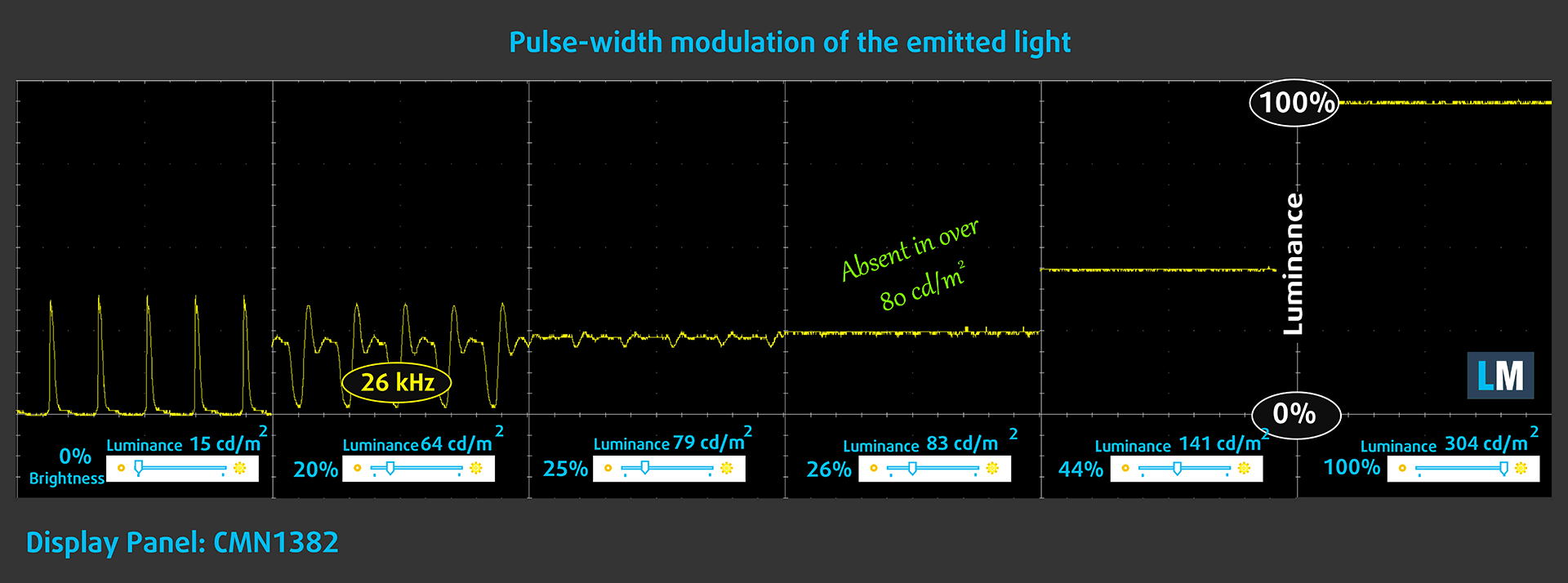
Blue light emissions
Installing our Health-Guard profile not only eliminates PWM but also reduces the harmful Blue Light emissions while keeping the colors of the screen perceptually accurate. If you’re not familiar with the Blue light, the TL;DR version is – emissions that negatively affect your eyes, skin and your whole body. You can find more information about that in our dedicated article on Blue Light.
Conclusion
Dell Latitude 13 7390’s display has an IPS panel with a very high contrast ratio, comfortable viewing angles, and a 98% sRGB color coverage. Additionally, it doesn’t use harmful PWM to adjust screen brightness levels and with the help of our profiles, it can produce extremely accurate colors. So that it can be used for Web designing purposes. As the main disadvantage, we should put the uneven luminance across the display.
Sound
Dell Latitude 13 7390’s sound is relatively quiet but has a good quality. There are some deviations in the low tones, while the mids and highs are clear.

Drivers
Dell has all of the drivers and utilities for the Latitude 13 7390 on their official web site: https://www.dell.com/support/home/sg/en/sgbsd1/product-support/product/latitude-13-7390-laptop/drivers
Battery
Now, we conduct the battery tests with Windows Better performance setting turned on, screen brightness adjusted to 120 nits and all other programs turned off except for the one we are testing the notebook with. The laptop is equipped with a 60Wh battery pack, which is a pretty hefty one for a 13-inch device.
This results in a great battery life results – more than 14 hours of screen on time.Web surfing
In order to simulate real-life conditions, we used our own script for automatic web browsing through over 70 websites.
Dell Latitude 13 739060Wh, 4-cell
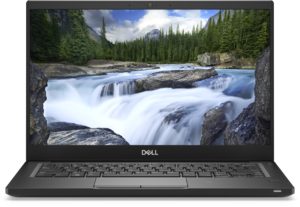
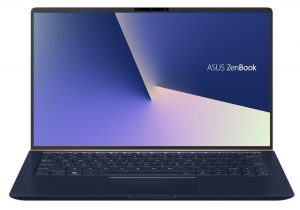
Dell Latitude 13 7390 2-in-145Wh, 3-cell
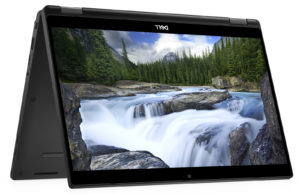
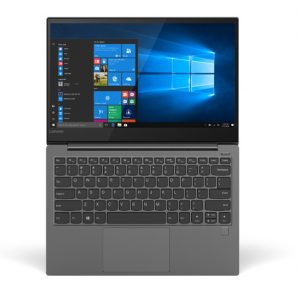
Dell XPS 13 938052Wh, 4-cell
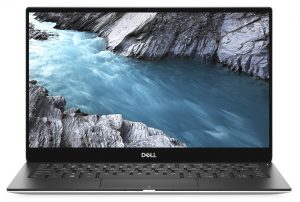
964 min.+13.4%Gaming
CPU options
This laptop comes with the entire Core i-range of 2018 vPro ULV CPUs – this includes the dual-core Core i3-8130U and the quad-core Core i5-8350U and Core i7-8650U.3D Rendering
Results are from the Cinebench 20 CPU test (the higher the score, the better)
Intel Core i5-8350UDell Latitude 13 7390

Dell Latitude 13 7390 CPU variants
Here you can see an approximate comparison between the CPUs that can be found in the Dell Latitude 13 7390 models on the market. This way you can decide for yourself which Dell Latitude 13 7390 model is the best bang for your buck.
Note: The chart shows the cheapest different CPU configurations so you should check what the other specifications of these laptops are by clicking on the laptop’s name / CPU.3D Rendering
Results are from the Cinebench 20 CPU test (the higher the score, the better)
Intel Core i5-8350UDell Latitude 13 7390

GPU options
As this is clearly a business laptop, Dell decided that it doesn’t need a dedicated graphics card. This ultimately means that the only choice is the Intel UHD Graphics 620. That iGPU is a refresh of the HD Graphics 620 found as an integrated solution in many ULV Kaby Lake processors. UHD Graphics 620 is codenamed “Kaby Lake R U GT2” and it’s a part of the Gen 9.5 generation.
Intel UHD Graphics 620 has roughly the same performance as HD Graphics 620, depending on the other components in the system. UHD Graphics 620’s performance is similar to AMD Radeon R5 M420X and NVIDIA GeForce 910M/920M.3DMark Fire Strike (G)
Results are from the 3DMark: Fire Strike (Graphics) benchmark (higher the score, the better)
Intel UHD Graphics 620Dell Latitude 13 7390

Gaming tests
A little bit under average performance from the integrated graphics card of the Latitude 13 7390. Additionally, we tested CS:GO, but it didn’t run at Vsync at all times, so we didn’t get adequate results, hence the lack of the test in the gaming tests table.

| DOTA 2 | HD 1080p, Low (Check settings) | HD 1080p, Normal (Check settings) | HD 1080p, High (Check settings) |
|---|---|---|---|
| Average FPS | 52 fps | 27 fps | – fps |

| Grand Theft Auto V (GTA 5) | HD 768p, Normal (Check settings) | HD 768p, High (Check settings) | HD 768p, Very High (Check settings) |
|---|---|---|---|
| Average FPS | 23 fps | – fps | – fps |
Temperatures and comfort
Max CPU load
In this test we use 100% on the CPU cores, monitoring their frequencies and chip temperature. The first column shows a computer’s reaction to a short load (2-10 seconds), the second column simulates a serious task (between 15 and 30 seconds), and the third column is a good indicator of how good the laptop is for long loads such as video rendering.
Average core temperature (base frequency + X); CPU temp.
| Intel Core i5-8350U (15W TDP): | 0:02 – 0:10 sec | 0:15 – 0:30 sec | 10:00 – 15:00 min |
|---|---|---|---|
| Dell Latitude 13 7390 | 3.24 GHz (B+91%) @ 93°C | 2.60 GHz (B+53%) @ 91°C | 2.11 GHz (B+24%) @ 78°C |
| Intel Core i5-8250U (15W TDP): | 0:02 – 0:10 sec | 0:15 – 0:30 sec | 10:00 – 15:00 min |
| Xiaomi Notebook Air 13 | 2.84 GHz (B+78%) @ 80°C | 2.16 GHz (B+35%) @ 71°C | 2.03 GHz (B+28% @ 76°C |
| Lenovo Yoga C930 | 2.91GHz (B+82%)@ 91°C | 2.72 GHz (B+70%)@ 95°C | 2.42 GHz (B+51%)@ 85°C |
Latitude 13 7390 extracts a good amount of performance from its vPro Core i5-8350U. We like to see a very high starting frequency – around 3.24 GHz, which is one of the main reasons for the blazing fast performance in day-to-day usage. However, this doesn’t come for free – the temperatures of this processor are climbing very high. On the bright side, expectedly, we saw a significant drop in clock speeds at the end of the test (still above the base frequency, though) and with this – the temperatures were a lot lower than at the beginning.
Gaming comfort
Comfort-wise, the device didn’t get too hot with a maximum temperature of 41C between the “4” and the “5” key. At the same time, the palm-rest area remained cool and the fans were not loud, as well.
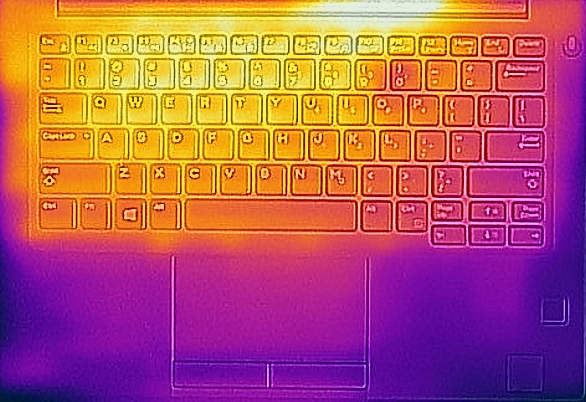
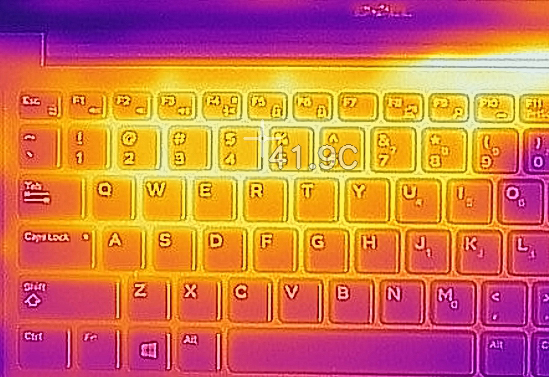
Verdict
Latitude 13 7390 checks all the boxes of a premium business laptop. Its look on the outside kind of resembles the MacBook of yesteryears, however, this shouldn’t hinder its reputation in the Windows laptop world. Even just stating the three build material options (aluminum, carbon fiber, and magnesium alloy) launches the versatility of this device sky high.
Additionally, it is an incredibly light machine that is in the league of ASUS ZenBook 13 UX333 in terms of size but falls a little short to match the feather thin Lenovo Ideapad 730S (known also as Yoga S730). Not only did they manage to cut the weight significantly, but they managed to extract a lot of performance from this and were able to pair it with a 60Wh battery pack. Speaking of which, we were able to extract more than 14 hours of web browsing from the Latitude 13 7390, which ranks pretty high in our Laptop Battery Life chart.
One of the most important features that define the laptop and is often overlooked by the manufacturers is the display. So what is the deal with this one? Well, Dell has put a fairly bright Full HD IPS panel (Innolux 133 HCE-0DDJ0 (CMN1382)) that has a very high contrast ratio, covers the sRGB gamut almost entirely (98%) and the flickers from its backlight are with a very high frequency and stop at 80 nits of brightness.
While with its default settings the display is not very suitable for color sensitive work, when our Gaming and Web design profile is applied, the color accuracy vastly improves. This helps it reach an average dE low enough for it to be perfect for Web design. However, there is a certain backside to the panel – its luminance across the screen is not very even with a maximum deviation of 13% in the lower right corner.
In terms of features the Dell Latitude 13 7390 is almost unbeatable in the 13-inch market – it not only has a Thunderbolt connector, proprietary USB Type-A ports, but it also features a Smart card reader, microSD card reader and an optional SIM slot. Moreover, it has not one, but two systems for biometrical identification – an optical fingerprint reader, which is rather slow and inaccurate and the blazing fast IR face recognition, that works 100% of the times, even in low light conditions.
At the end of the day, this is definitely a laptop you should consider if you are in the market for a 13-inch premium business device. On the other side, if you are looking for something a little bit cheaper – take a look at the ASUS ZenBook 13 UX333.
Pros
- Three build material options
- Thin and light bezel-less design
- Pleasant keyboard for typing
- Very high contrast and 98% sRGB coverage (Innolux 133 HCE-0DDJ0 (CMN1382))
- It doesn’t use aggressive PWM to adjust screen brightness (Innolux 133 HCE-0DDJ0 (CMN1382))
- Very accurate colors when our Gaming and Web design profile is applied – average dE=0.7
- Wide variety of I/O with Thunderbolt support
- Super fast IR face recognition
Cons
- The display is not very uniform in terms of luminosity
- A little bit pricey
You can check the prices and configurations on: https://ritelink.com.ng/dell-latitude-7390-intel-core-i5-256gb-ssd-16gb-ram-windows-10pro.html


